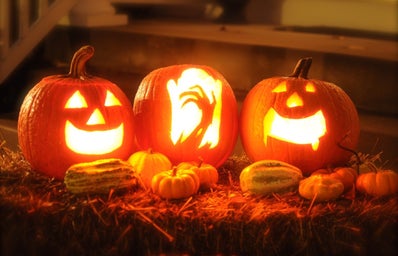The Her Campus National Editors write about products we love and think you’ll love too. Her Campus has affiliate partnerships, so we get a share of the revenue from your purchase. All products are in stock and all prices are accurate as of publication.
Halloween has its origins in Samhain, a Celtic festival that marked the end of the harvest and the beginning of winter, which lasted all night. It was believed that during that night, the border between our world and the world of the dead could be crossed.
During Celtic Samhain, it was common for people to dress up in costumes, looking for food in the houses of the cities where they lived, a custom that ended up surviving and becoming the culmination point of Halloween. Food was left for ghosts who might visit their old homes and families. Large bonfires were lit where animal sacrifices were made.
Religious Origin
Another explanation for the origins of Halloween, comes with Pope Gregory IV deciding to consolidate All Saints’ Day on November 1st. At that time, pagan beliefs and customs were being appropriated by Christian culture.
Historians need to find out whether the measure was carried out on purpose to combat the influence of Samhain, but in any case, it consolidated a period of Christian celebrations in the British Isles known as All Hallows Tide.
- All Hallow’s Eve – celebrated on October 31st as the eve of All Saints’
- All Saints’ Day – celebrated on November 1st as All Saints’ Day. It was a date of veneration for the saints of the Church.
- All Souls’ Day – celebrated on November 2nd.
Costume and pumpkin tradition
During Samhain, the Celts went door to door asking for contributions so that the party could be held. Furthermore, the pumpkin used in American Halloween is an adaptation of a practice carried out by them at the time.
The Celts used to carve turnips with macabre faces to ward off evil spirits. As there were many pumpkins in the United States, people began to use this fruit instead of turnips to carve macabre faces and place their lanterns.
Meaning of Halloween colors
The colors orange, black, and purple were not chosen by chance to represent the party.
- Orange: color that brings vitality, energy, and strength. The Celts believed that spirits approached those who wore orange to drain their energy.
- Black: the predominant color of wizards, witches, sorceresses, and priests of the master of darkness.
- Purple: symbolizes the magic present throughout the Halloween celebration.
Halloween at the moment
With the Irish, elements of their culture were taken to the United States and after a while, they ended up gaining fame and becoming one of the biggest celebrations in the country. Currently, Halloween is a huge party that attracts an average of 170 million people, who spend billions of dollars on it.
Nowadays, children dress up as monsters and go out on the streets asking people for sweets. Here in Brazil, this party has become increasingly common due to the influence of North American culture.
————————————————
The article above was edited by Beatriz Gatz.
Liked this type of content? Check Her Campus Cásper Líbero home page for more!


